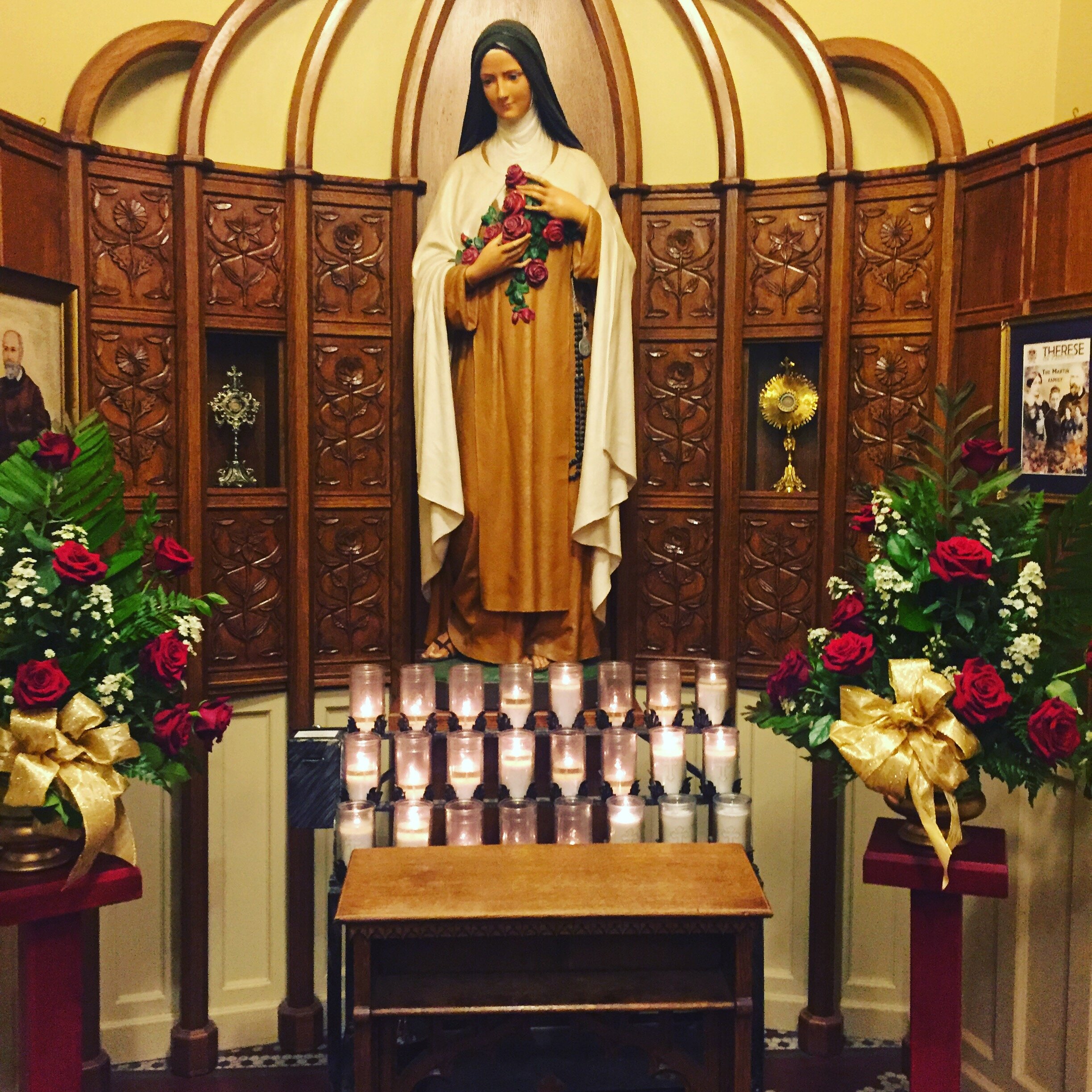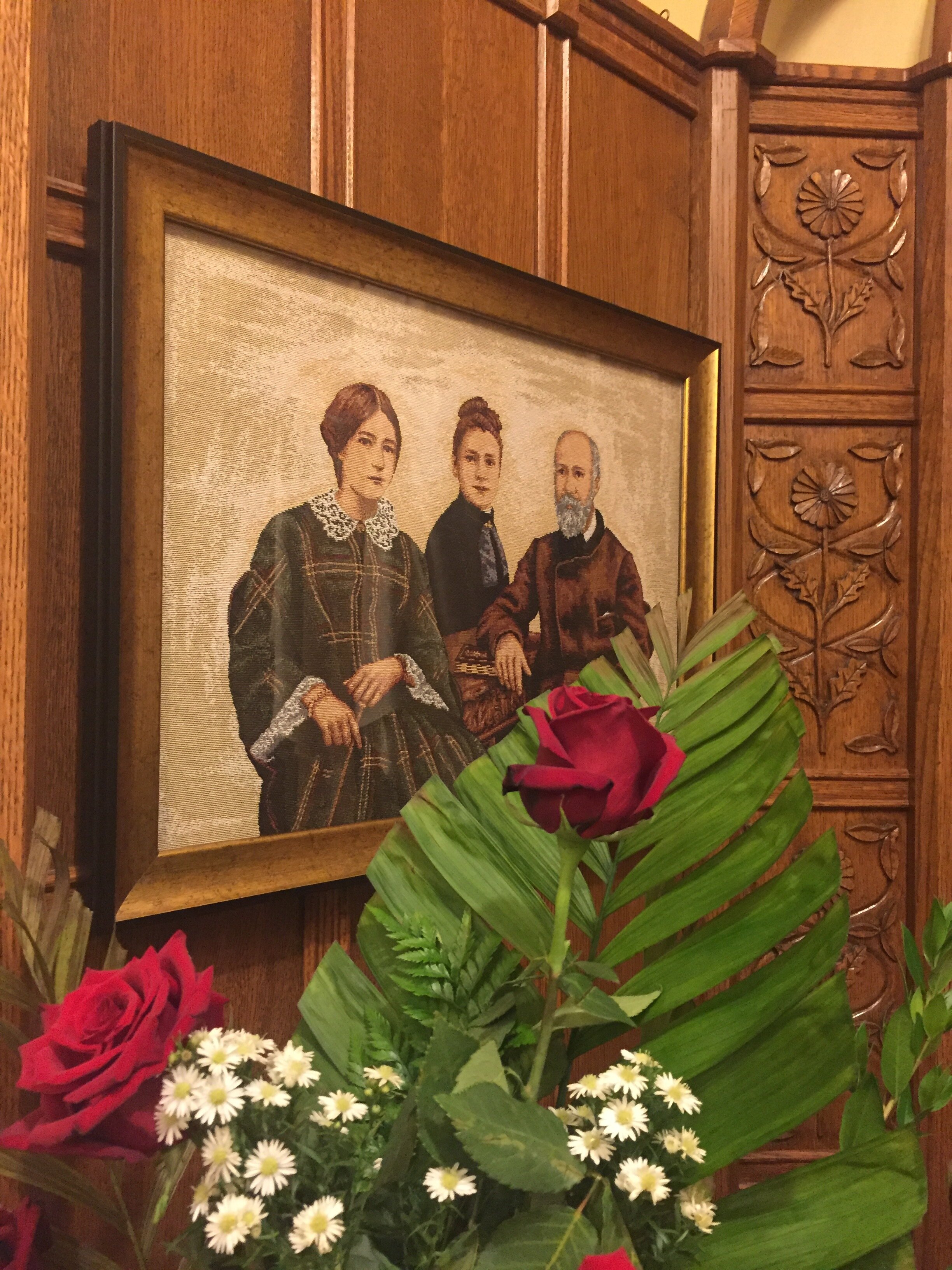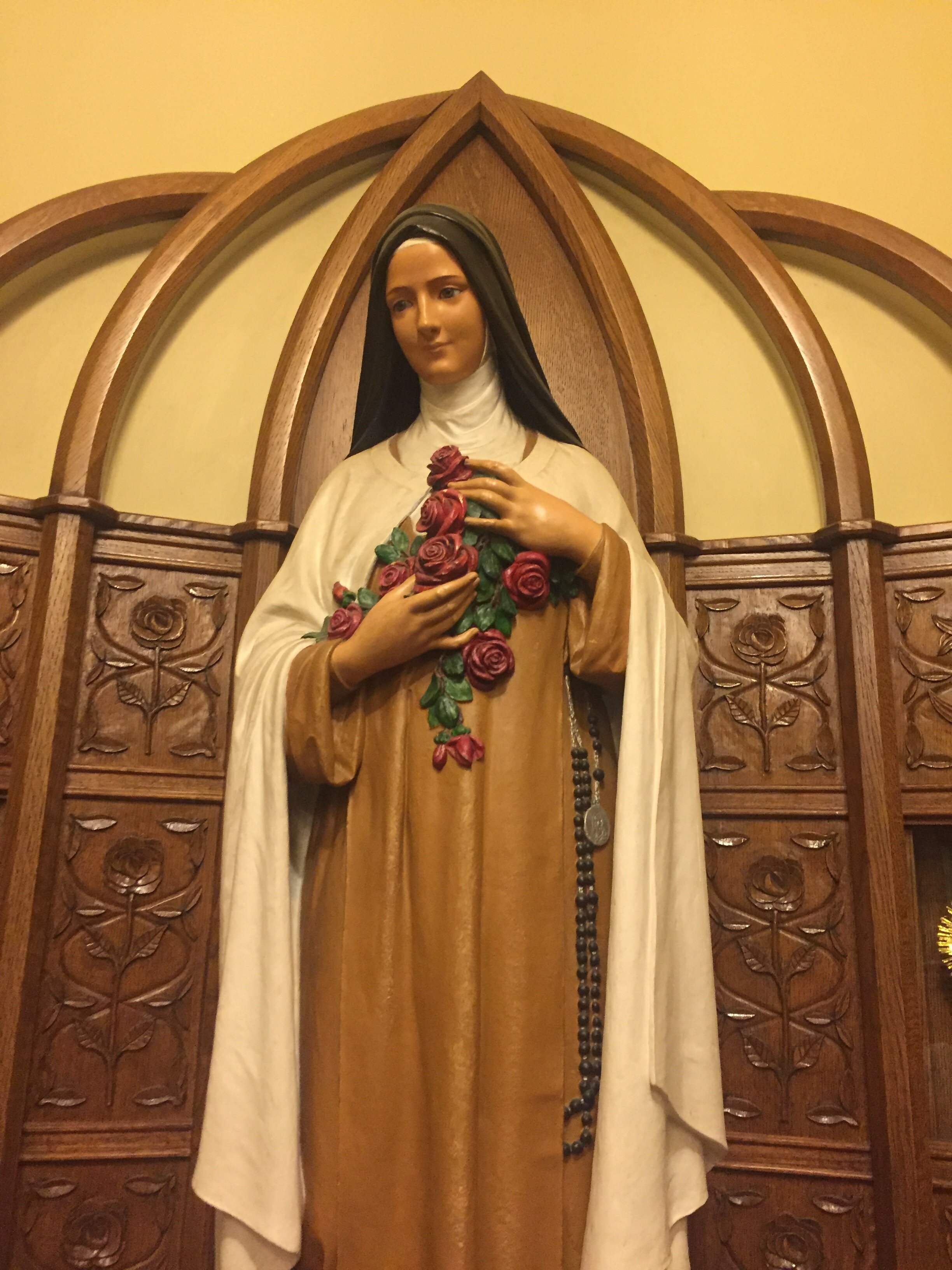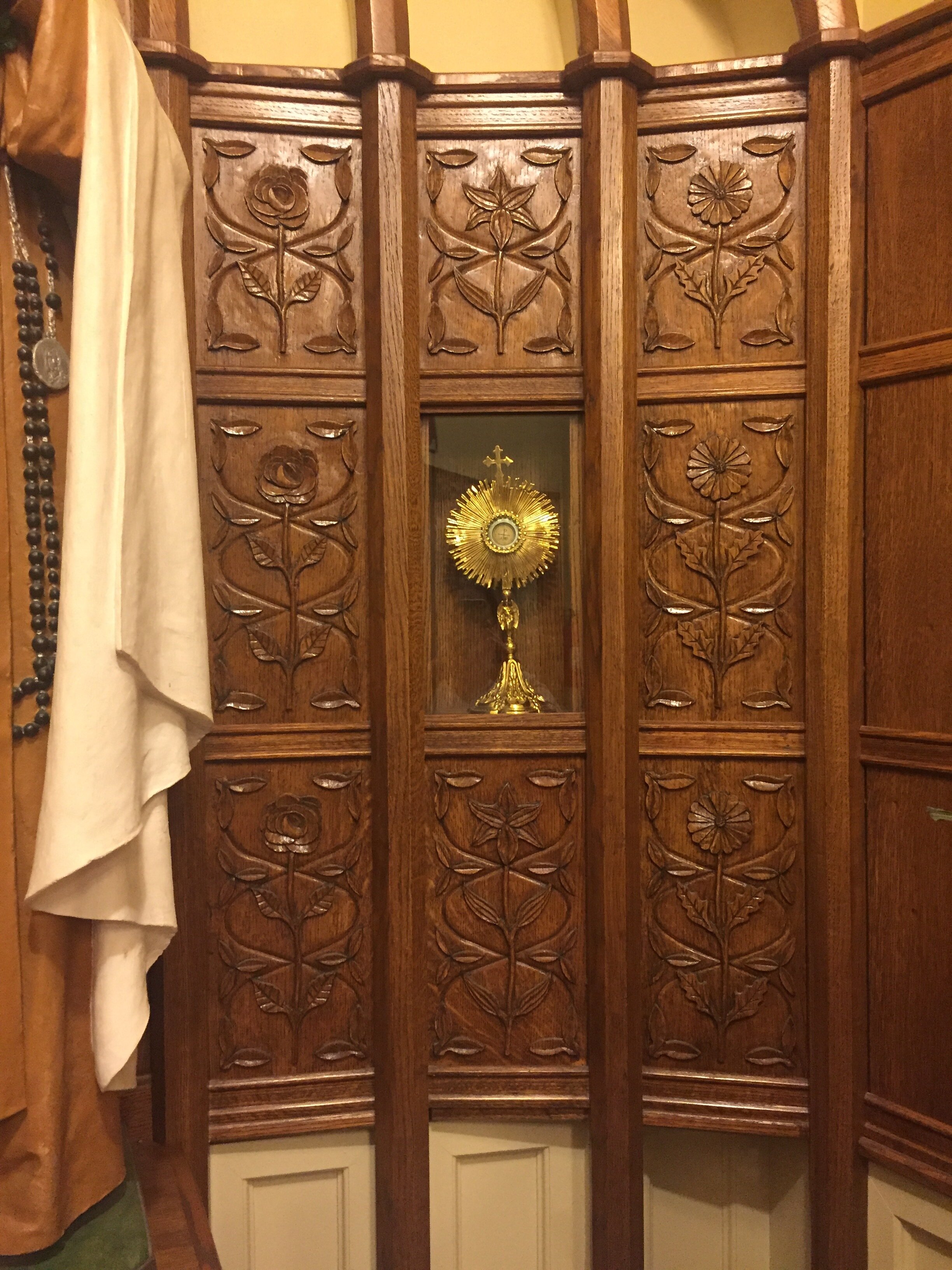-I-
Hi! OK first things first: I was on the radio this week!
I loved being on Al’s show! He was great to talk to, especially in working memento mori in with All Souls’ Day! It can be easy to pigeonhole my book as a “Lent book” (IT IS NOT) so I was glad to have an interview that wasn’t all Lenty!
(Although, I mean, it is applicable in Lent….;-)
Funny story about this: Since Al’s show (Kresta in the Afternoon) is broadcast nationally, Diane and her kids were able to listen to the show live, since this was aired during the pick up from school time in Houston. Di said that the kids were silent on the way home, listening to the interview!
So we have found the key to silent, calm rides home: Put on Emily talking about her book. :-p
Magic!
-2-
I haven’t done a yarn along here in awhile, so let’s catch up!
Right now I’m working on several Christmas gifts, including a blanket for Madeleine…(aka, my niece)
Here’s a look at the seed stitch pattern.
The yarn for this blanket is Rowan Cashsoft Merino in Turquoise, Rosy, Snowflake, and Lavender. It’s a modification of the Sully blanket—I’ve added a four stitch knit stitch border on both sides to keep it from curling in. I might also, the next time I make this, add the border all the way around.
There are also three scarves I’m working on for Christmas gifts, which I can’t show you here, haha.
For myself:
This is the garter graffiti shawl , using Spincycle’s Dream State in Starstruck and LolaBean Cool Beans Worsted in Teal Me In. I love how the Spincycle yarn works here!
I’m also working on my Ursina sweater:
Some of the set up rows.
This is knit in one of my favorite yarns—Quince and Co Lark—in the LE color way Blue Balloon.
And that is it for a yarn along! Whew!
-III-
In the Dominican third order (Lay Dominicans), you take a name when you enter, just like the friars and sisters/nuns do. WheN I entered, I chose Bl. Lucy of Narnia as my patron. Her feast day is coming up, and if you’ve never heard of her, here is a piece from the Dominican student brothers’ blog about her!
And here’s a piece I wrote about her, many moons ago!
Lucy Pevensie, as seen in The Lion, the Witch, and the Wardrobe.
-IV-
Even though Orchard House (my apartment) is not a house, it’s still good sized (it’s over 1000 sq ft), and I love looking at decorating ideas. Really my style is very British/English country cottage, but when it comes to style, I love to look anywhere!
This piece in Apartment Therapy definitely made me wish I could organize my yarn like she does! Jennifer is actually a teacher in this season of Knit Stars (an online knitting mater class with a ton of teachers—there are six seasons now!), and I’m really looking forward to her class.
I mean look at the yarn!
I also really want a dress form like the one on the right, but alas, they are expensive so I’ll have to save my pennies. But they’d be great for displaying big shawls and sweaters! I also need to get a “head model” like the one you see on the shelf there. I am going to finish a hat soon, I am I swear. Just have to learn one more thing!
-V-
Patty had a pretty great Halloween and has discovered the joys of Three Musketeers bars.
L-R: Fighter pilot, Alice being held by the Queen of Hearts, a fairy, and a fire fighter!
“MOAR CHOCOLATE, MAMA!”
-VI-
In other Patty news, she also KISSES THE PHONE NOW. It’s so cute. We also love to play peek-a-boo: she hides herself from the phone screen and then pops back in. She thinks it’s the most brilliant thing ever.
-VII-
I am just about done with my Christmas shopping and I am starting to write out my cards! I generally shop early for Christmas and I’m sure glad I did it this year because who knows when things will show up…I like to be an early bird when it comes to this sort of stuff.




































